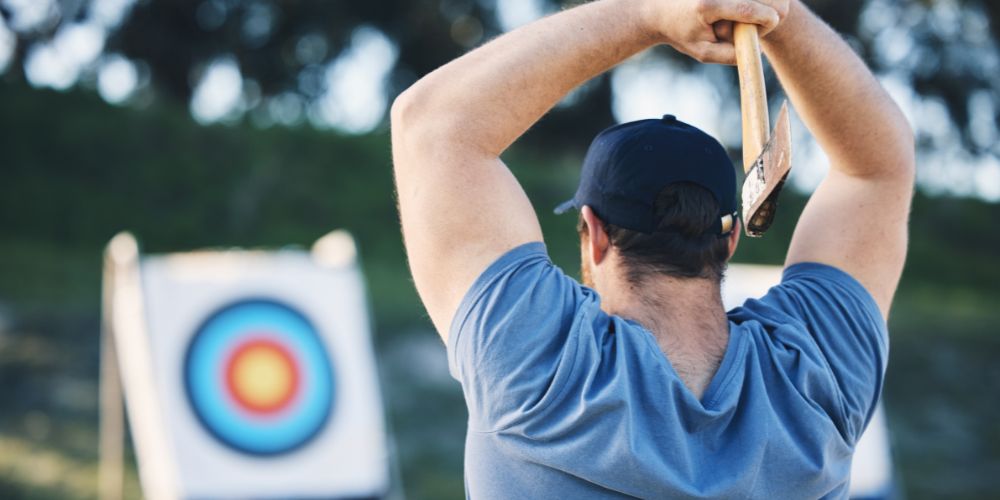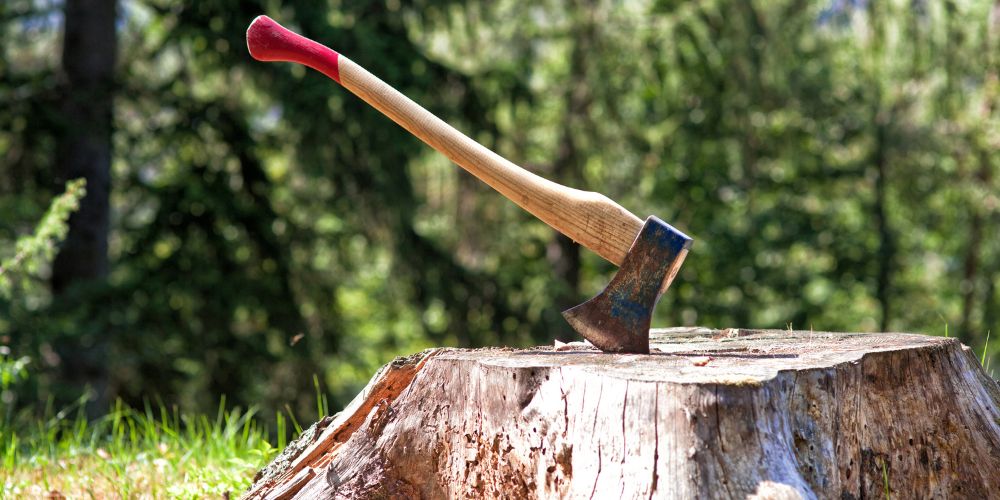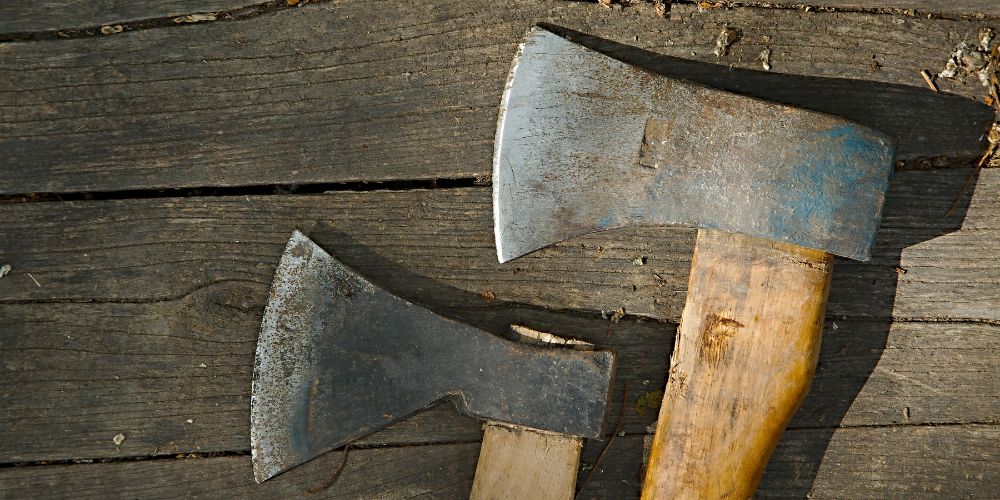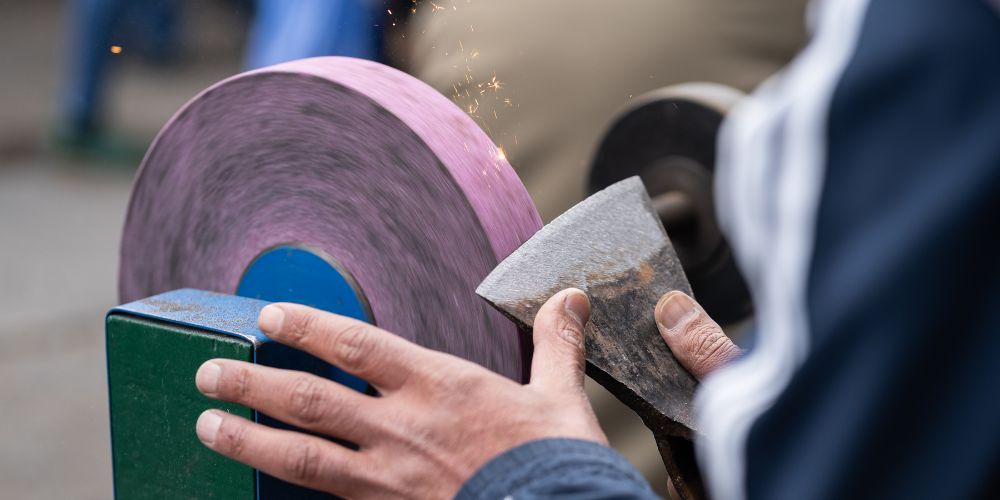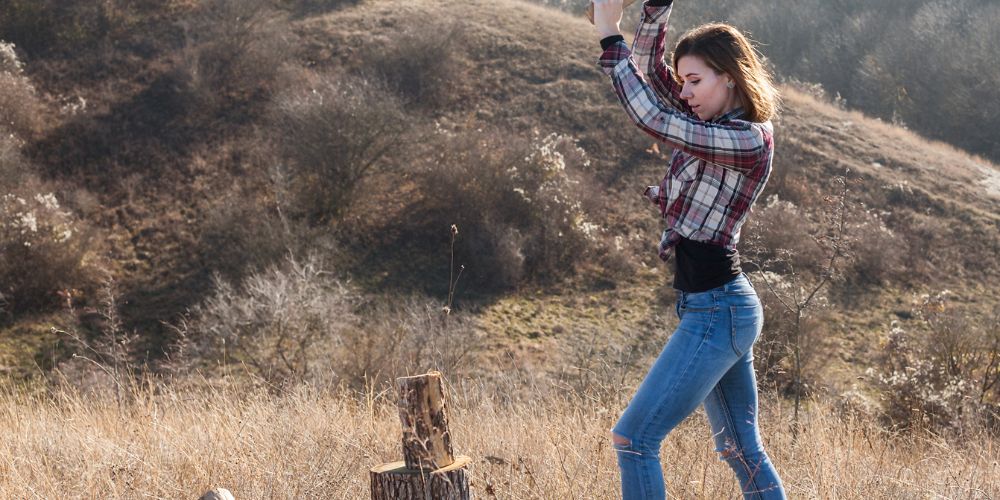Overview
Accuracy, arm power, and good technique are needed when throwing an axe. It’s critical to select the appropriate axe size and weight for your level of experience. Aim towards the target’s center with a simple one-handed grip at first. Regular practice will help you become more accurate and reliable.
How to Throw a Axe
Proper technique
Depending on your preference and the size of the axe, you should grip the handle firmly with one or both hands when throwing an axe. As you face the target while standing with your feet shoulder-width apart, bring the axe back behind your head with your dominant hand. Aiming towards the target’s center as you move the axe forward, release it with a fluid, smooth stroke.
Arm strength
It takes a lot of arm strength to throw an axe, especially if you are using a heavy axe. You might attempt exercises like tricep extensions, shoulder presses, and bicep curls to increase your arm strength. To prevent damage, it’s crucial to warm up properly before throwing.
Accuracy
When throwing an axe, accuracy is essential, especially if you want to strike a specific target. Start practicing with a larger target to increase your accuracy, then as your skills advance move on to smaller targets.
To keep yourself calm and focused, it’s also beneficial to pay attention to your breathing and visualization exercises.

Axe size and weight
an ability to throw an axe accurately can be significantly impacted by its size and weight. Although heavier axes call for stronger arms, they can also deliver more force and momentum when thrown. Axes that are lighter to wield may not travel as far or strike the target as forcefully.
It’s crucial to pick an axe that feels balanced and comfortable in your hand, and to start with a size and weight that correspond to your degree of expertise. As you advance, you can test out various axes to determine which one suits you the most.
Common Mistakes to Avoid
- Gripping the axe too tightly: Holding the axe too tightly can cause you to throw it off-balance or too hard, leading to inaccurate throws. Instead, focus on a relaxed but firm grip that allows for a smooth release.
- Overthinking the throw: Overthinking the throw can cause you to hesitate or make awkward movements, leading to inaccurate throws. Instead, focus on your technique and visualize the throw before making your move.
- Standing too close or too far from the target: Standing too close to the target can put you in danger of hitting it with the axe handle, while standing too far away can make it difficult to aim accurately. Instead, find a comfortable distance that allows you to throw with ease and precision.
- Not following through: Failing to follow through with the throw can cause the axe to fall short or veer off course. Instead, focus on following through with a smooth, fluid motion, and keep your eyes on the target until the axe makes contact.
- Using too much force: Using too much force can cause the axe to bounce off the target or become stuck in the wood. Instead, focus on using a smooth, controlled motion that allows the axe to sink into the target without too much resistance.
FAQs
1. Is axe throwing safe?
Yes, axe throwing can be safe when proper safety measures are followed, such as wearing closed-toe shoes, using a secure target, and having a trained instructor or experienced thrower present.

2. Do I need a lot of strength to throw an axe?
While some arm strength is required, axe throwing is more about technique and accuracy than raw power. Beginners can start with a lighter axe and gradually work their way up to heavier ones as their skills improve.
3. What kind of axe should I use for throwing?
The best axe for throwing depends on your skill level and personal preference. A lighter axe may be easier to handle, while a heavier axe can provide more momentum and power. It’s important to choose an axe that feels comfortable and balanced in your hand.
4. Can I learn to throw an axe on my own?
While it’s possible to learn to throw an axe on your own, it’s recommended to start with a skilled instructor or experienced thrower who can provide feedback and guidance on your technique.
Conclusion
It takes good technique, arm strength, precision, and the ideal axe size and weight to learn how to throw an axe. Beginners should concentrate on good technique and follow-through rather than making frequent errors like holding the axe too firmly or overthinking the throw.
Anyone can get better at axe throwing by frequently practicing and getting advice from a qualified instructor or seasoned thrower, and they can take pleasure in this exciting and hard pastime.
